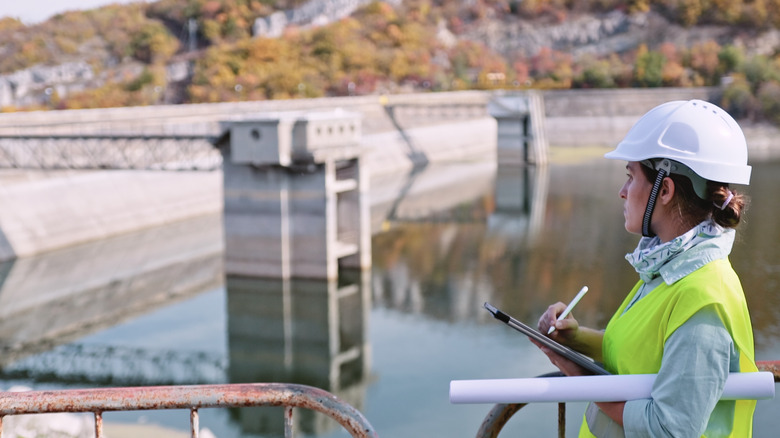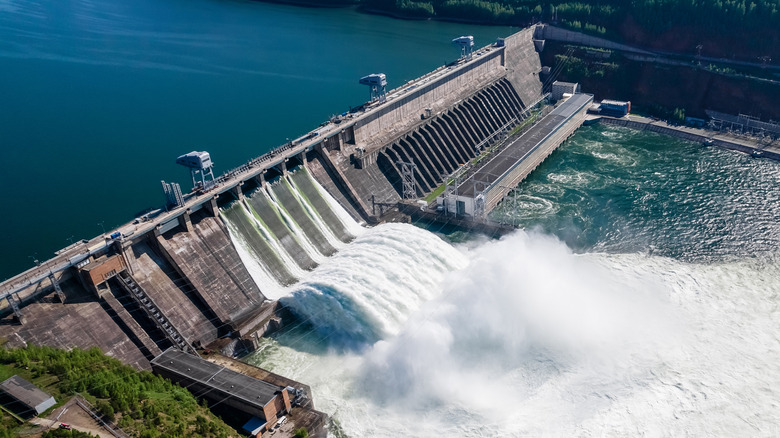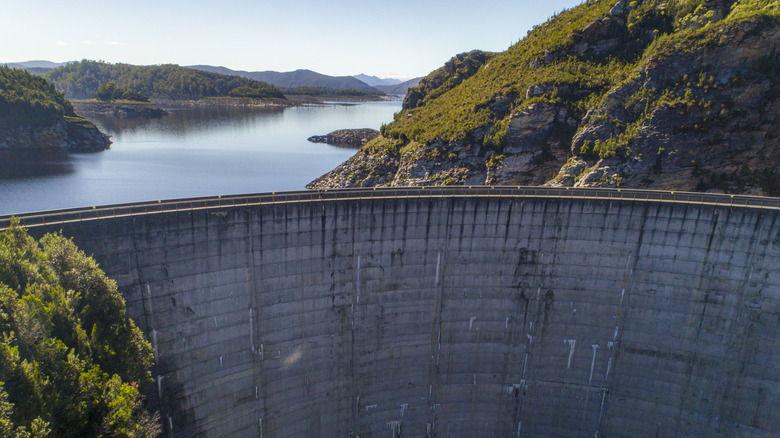The Power Of The Dam: Hydroelectric Energy Explained
Generally speaking, it's best to ensure that water and electricity stay far away from each other. Though water itself doesn't conduct electricity very well, the ions that are in play (in swimming pools for instance) quickly change that. Have you ever been rushed from a hotel swimming pool as a storm rolls in, or felt a prickle of fear whenever a full glass is placed a little too near an electrical outlet? That's why.
The fact remains, though: Water and electricity is a combination of tremendous power when harnessed safely and correctly, and hydroelectricity is a prime example of that. There are few forces on Earth as mighty as running water (as King Canute discovered to his great chagrin), and hydroelectricity takes advantage of just that to provide an eco-friendly, energy source of enormous potential.
Let's take a closer look at the concept of the hydroelectric dam, how they work, and just how effective they are. They may not be powering renewable energy flight yet, but they have great potential.
How do hydroelectric dams work?
As any beaver will tell you, dams are vital structures for managing and controlling the flow of water. The concept of a hydroelectric dam expands upon this, finding a way to convert all the potential energy generated by that water flow into power.
Hydroelectric facilities are developed in close proximity to a suitable, high-volume source of water. Their design ensures that the water passing through travels along to a penstock, from which the flow can be increased or decreased according to the facility's needs. The rush exiting the penstock spins the facility's turbine blades, thereby generating electricity.
Typically, these sorts of facilities are built on dammed rivers: the higher water level allows for a steeper journey for the water to travel, and so more energy is generated by the turbines. Not all hydroelectric plants work in this way, though.
Diversion facilities instead utilize the simple force of rushing river water by leading it along a mechanical route and down to the penstock, generating electricity from there instead. Large dams, of course, can be rather intrusive and are not a fit for every location, while hydroelectric power that diverts the flow in this way can potentially be easier to implement. In any of its forms, hydroelectric power has great potential, and is an ingenious and effective way of adapting to nature.
Just how much power can hydroelectric dams produce?
Much like wind and solar, hydroelectric power is another example of an eco-friendly energy source that borrows that power — rather than directly exploiting it as fossil fuels do. Dams are able to tap into an enormous amount of it, too: The USGS declared China's Three Gorges Dam to be the largest in the world as of 2012, noting that it can generate 22,500 megawatts of power.
The United States, too, heavily invests in hydroelectric power, with the U.S. Energy Information Administration reporting in 2022 that almost 29% of the nation's renewable energy is generated by such a source. The fact that this represents only around 6.2% of U.S. total electricity, though, indicates that the world has a lot more to do when it comes to expanding the use of renewable power sources.
University of Tubingen research shared by the BBC in August 2018 suggests that, by the end of the decade, 7,000 new hydroelectric plants may be in the works. Hydroelectricity may well have a big part to play in our future, but even if the plants and resultant dams are easier and less costly to maintain than alternatives, it's important to balance this against the downsides. The mighty Hoover Dam has provided 1.3 million people with electricity annually, but falling water levels may render it unable to do so in the future, and the same fate may befall other plants.


